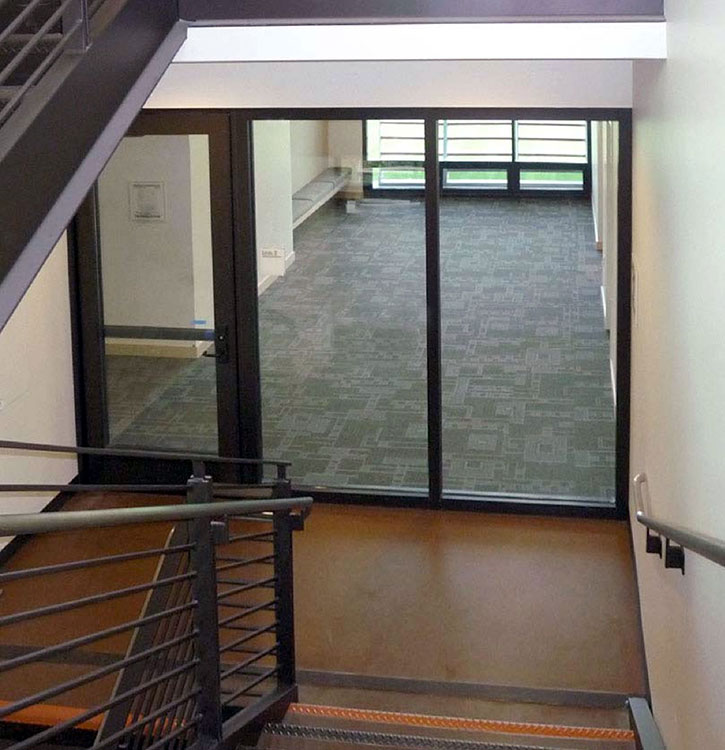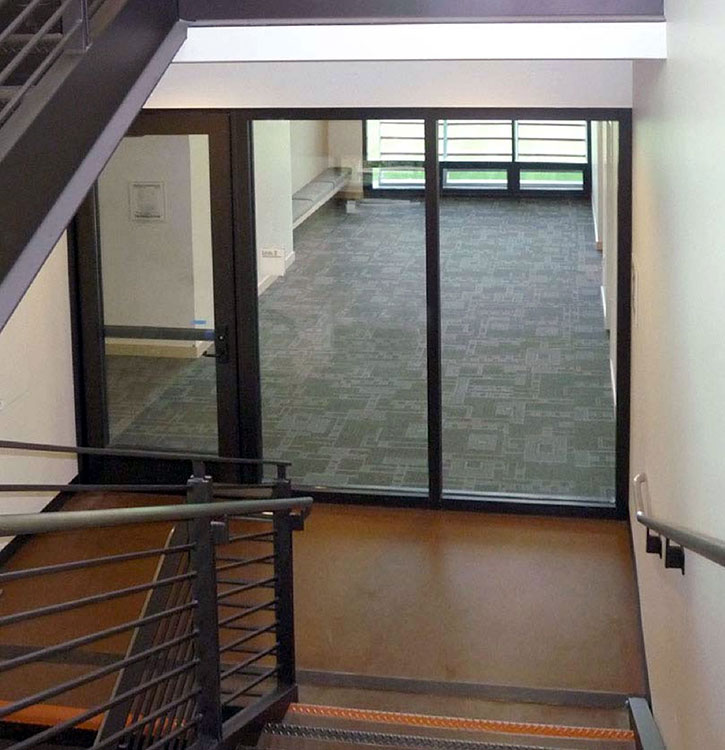NFPA 80 Code Changes Force Industry Response

NFPA 80 Code Changes
This article discusses how NFPA 80 code changes related to vision panels in new wood doors forced the window and door manufacturers to respond. The IBC helps correct the wrong.
NFPA 80 Code Changes Force Industry Response
by Jeff Griffiths
What do you get when you add fire rated glass and a vision lite kit to a wood door? Apparently, a whole lot of trouble. At least, that was the feeling that prompted the Window and Door Manufacturers Association (WDMA) to pursue the 2010 NFPA 80 code change requiring vision panels in new wood doors to be installed according to inspection service procedure under a label service. Once the updated code is adopted locally, glaziers within the respective jurisdictions will be prohibited from having anything to do with what was once a logical portion of their scope of work. If it isn’t already, the question that should be on every glazier’s mind is, “Why is this restriction necessary?”
According to Dan Hibbs, Product Development Manager for Eggers Industries and chairperson of WDMA’s Interior Products Technical Committee, “It is a common experience for wood door manufacturers to find improper installations when visiting job sites. Furthermore, most of these issues are not being red-tagged in the field because no one realizes they are being done wrong.” Dan also points out variations in door core materials and the varying means of protecting those materials prescribed by vision kit manufacturers have resulted in mistakes and confusion in the field that jeopardize life safety. In order to limit such potential liability, concerned door manufacturers decided to take control of the situation.
However, could this become another case of regretting what you’ve asked for? Steel door manufacturers opted out, claiming that they didn’t have a problem. According to Tom Janicek, NFPA 80 Glazing Task Group representative for the Steel Door Institute (SDI), “As I understand the situation, the Task Group of NFPA 80 that was working on this felt that because of the complexity of some of the wood door glazing systems since the advent of positive pressure, they should be installed under label service. Since the installation of glazing in steel doors is relatively basic construction, they were not included in the change.”
By taking on the perceived problem, wood door manufacturers face the prospect of managing glass and glazing departments that could require investment in fire-rated glass and vision kit inventories, coordination cutting operations, contending with scrap glass, and a number of other hidden costs now shouldered by glaziers, fire-rated glass manufacturers, and their distributors. Reduced product liability will come at a cost. Is this really the answer?
The debate over this question at the February meeting of the NFPA 80 Glazing Task Group earlier this year resulted in the following proposed addition to the existing language: “…shall be installed in accordance with inspection service procedure under label service or by certified or listed personnel. “ However, the committee put the burden on industry (fire-rated product manufacturers, glaziers, and the testing agencies) to develop a viable training and certification program prior to the publication of NFPA 80-2013.
As of this writing, the various players are still huddling, but their task is hardly insurmountable. Intertek Testing Services (ITS) currently certifies two installation programs addressing the field modification of existing fire-rated products which can serve as examples. Garrett Tom of Product Certification Consultants administers a training program covering hardware issues. SaftiFirst administers a training program addressing the field filming of glass. In each case, ITS reviewed the proposed educational information and its format to ensure comprehensive coverage of the installation methodology and related code requirements, established a reasonable certification renewal and annual fee schedule, and prescribed labeling protocol. Program participants are obviously required to pass a certification examination after completing the training and must be prepared to present their personalized certification card at the request of any authority having jurisdiction (AHJ) while on job.
Who benefits from this incidental change? The wood door manufacturers achieve their goal of eliminating future product failures through formal training and can continue business as usual. A governing agency such as ITS benefits through the establishment of a new revenue stream. The glazier acquires a marketable certification, albeit with some grumbling. Ultimately, the general public remains protected and assured of product performance.
IBC Rights a Previous Wrong
 |
| A 2 hour exit enclosure with 90 minute doors. Fire resistive glass is used to bring vision and transparency to the 2 hour exit enclosure/stairwell. |
In 2006, Tri-Data, a division of System Planning Corporation (SPC), published a report titled “Fire Spread and Built-in Fire Protection: A Preliminary Analysis.” SPC provides engineering, analysis and technical planning support to both the public and private sector. Their analysis focused on 2003 fire incident data from the National Fire Incident Reporting System (NFIRS) in an effort to established a quantitative baseline of available fire protection within buildings given prevailing construction standards.
The study found that, “in over half of non-residential properties and in 60 percent of residential properties, the fire spread was limited to the room of fire origin. Depending on the building use, this proportion rises to over 85 percent—87 percent in educational properties and 90 percent in health-care related properties. In other words, without benefit of additional active systems, the combination of pre-2003 building construction, design, fire load, and fire department response results in fire containment in well over half of the properties in the dataset. While PFP [passive fire protection] is not alone responsible for this containment, it is critical component of an overall fire protection system, beginning with the building itself and ending with appropriate and speedy fire department response. “Tri-Data’s report acknowledges that previous studies conducted by the NFPA and others demonstrate the value of sprinkler systems, but none have confirmed the ability of a sprinkler system to provide the same levelof safety as passive fire protection alone.
With this in mind, SaftiFirst successfully proposed a modification to Section 715.4.4 (Doors in exit enclosures and exit passageways) as part of the 2009 code review cycle. The existing text included an exception allowing the maximum transmitted temperature rise of 450 degrees F at 30 minutes to be ignored if the building had a sprinkler system throughout. The code committee agreed with SaftiFirst’s claim that the removal of this exception would make the size limits of fire protection rated glazing in 60- and 90-minute rated doors n exit enclosures and passageways consistent with size limits for 60- and 90-minute rated doors elsewhere in the code. As a result, the exception does not appear in IBC 2012.
Tri-Data’s study substantiates the value of passive fire protection design and underscores the fact that the presence of sprinklers in a building does not eliminate the life safety and fire spread hazard posed by unrestricted transmission of radiant heat through fire protection rated glazing, especially when located in doors protecting exit enclosures and exit passageways deemed essential for occupant life safety. The continued use of full lites of fire resistance rated glazing that has been tested to confirm its ability to limit the transmission of radiant heat is unaffected by this code change.
Who benefits from this incidental change? Obliviously, the general public benefits from the continued presence of passive fire protection, whether or not sprinklers have been installed. The cost trade-off from safety-rated fire-protective glass to fire-resistive make-ups varies widely with regard to full lites and product options. But in the final analysis, these changes to the IBC and NFPA standards result in an overall cost benefit to building owners by ensuring the 24-hour passive fire protection maintained the integrity of their investments.
Source: Doors and Hardware, June 2011